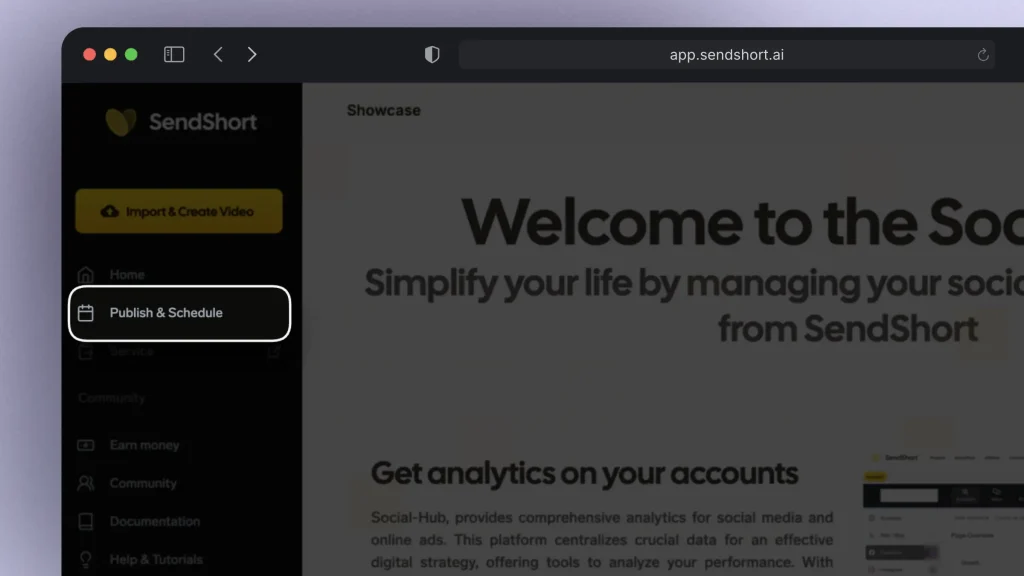

You’re likely on this page because you:
- Heard that some people make a living out of AI videos
- And you want to join them…
- But you’re not sure where to start
This guide teaches you that, without any fluff or time-wasting.
Can I earn money from an AI video?
Answer: Yes, you can make money from an AI video if it gets views.
TikTok, Instagram and YouTube are paying content creators that get thousands of views.
For instance, TikTok pays creators $0.02 to $0.04 per 1,00 views → which is very easily achievable with a great story made by AI.
Here’s the kind of AI video l’m talking about:
Bear with me, I’ll teach you how to make those videos in just a second.
It’s super easy!
How to Make Money with AI Videos (for free)
Answer: The easiest way to make money with AI videos is to generate 15-20 videos, then schedule them for TikTok, Shorts and Reels. SendShort does all of that for free!
Let me break down each step of the process
1. Pick a Niche
Choosing the right niche is crucial for the success of your AI-generated videos. Focus on areas where there’s consistent interest and demand, such as technology, health, or motivation. By aligning your content with popular topics, you increase the chances of your videos gaining traction quickly.
Pro Tip: SendShort helps you choose that.

- Identify evergreen content that stays relevant over time.
- Analyze successful competitors to see what works in your chosen niche.
- Follow industry trends to keep your content fresh and engaging.
2. Create AI Videos in Bulk
Using SendShort makes the process of creating videos incredibly simple.
You can generate high-quality, short-form videos without needing advanced editing skills or expensive equipment.
This tool is perfect for creating engaging faceless videos that still capture attention and deliver value to your audience.

- Generate scripts with AI tools like ChatGPT for fresh content ideas.
- Use SendShort to automatically create videos optimized for social platforms.
- Focus on creating faceless content to scale production effortlessly.
3. Come up with Good Captions
Optimization is key to ensuring your videos are seen by as many people as possible. By focusing on SEO-friendly titles, descriptions, and relevant hashtags, you can significantly increase your content’s visibility on platforms like YouTube, TikTok, and Instagram.

Proper optimization helps your videos reach the right audience and boosts engagement.
- Craft SEO-friendly titles and descriptions using trending keywords.
- Use custom thumbnails to capture attention and improve click-through rates.
- Incorporate relevant hashtags to enhance discoverability.
4. IMPORTANT: Monetize
Monetizing your content is the end goal, and there are multiple ways to achieve this. From earning revenue through platform-specific funds to affiliate marketing and sponsorships, your videos can become a significant source of income.

The key is to build a strong, engaged audience that trusts your recommendations.
- Join monetization programs like YouTube Shorts Fund or TikTok Creator Fund.
- Include affiliate links in your video descriptions to earn commissions.
- Negotiate sponsorship deals as your audience grows.
5. Scale your Operation
Once your content starts gaining traction, scaling your operation becomes essential. Consistency is key to maintaining audience interest, and by using analytics, you can fine-tune your strategy for even better results.

Automation tools like SendShort allow you to produce content efficiently, freeing up time to focus on growth.
- Post content regularly to keep your audience engaged.
- Use platform analytics to refine your content strategy.
- Automate video creation with SendShort to scale efficiently.
Best Practices to Monetizing AI Videos
The short story: Focus on creating high-quality, niche content that adds unique value. Consistent posting and optimizing for engagement are key to maximizing revenue.
- Niche Focus: Target a specific niche where AI content can add unique value, like educational videos, tutorials, or niche entertainment.
- Platform Selection: Choose the right platform (YouTube, TikTok, or Patreon) based on your target audience. Each platform has different monetization options, like ad revenue, sponsorships, and memberships.
- Content Quality: Ensure your AI videos are high-quality, engaging, and relevant. Quality content attracts more viewers, leading to higher ad revenue and potential sponsorship deals.
- SEO and Keywords: Optimize your video titles, descriptions, and tags with relevant keywords to increase visibility and reach.
- Consistent Posting: Regularly upload content to build a loyal audience. Consistency keeps your channel active, which algorithms favor, boosting your chances of being recommended.
FAQ: Monetize AI Videos
1. Can AI-generated videos be monetized?
Answer: Yes, AI-generated videos can be monetized on all short-form video platforms.
Just check if you meet that platform’s monetization requirements.
2. Can I monetize AI videos on TikTok?
Answer: Yes, you can monetize AI videos on TikTok through the TikTok Creator Fund, which pays based on video performance. You can also earn through brand sponsorships and affiliate marketing within your videos.
3. Can I monetize AI voice video on YouTube?
Answer: Yes, you can monetize AI voice videos on YouTube as long as the content adheres to YouTube’s monetization policies. This includes using original scripts or ensuring that the AI-generated content is transformative and provides value to viewers.
Thanks a lot for reading this,
David Ch
Head of the Editing Team at SendShort







